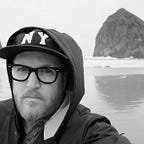It’s Not Easy, But It Works
Another semiannual update on our diversity efforts—with some thoughts about excuses, tactics, and accountability.
A few weeks ago, I participated in a webinar about diversity and inclusion. It was spearheaded by a group of passionate people (mostly women and not nearly enough men, but more on that another time) and the conversation moved in lots of different, exciting directions—how to create an industry-wide standard for diversity/inclusion, how to better empower women and under-represented groups of people, how to engage more men in the conversation (and especially the work). Toward the end of the call, however, one of the participants expressed a classic, problematic perspective on her situation:
We really want to hire more diverse people for our open positions, but we just can’t find any. It feels like the best opportunity is to invest in training and educating a younger generation—working with schools and industry associations to raise the next wave of diverse creative talent.
You’ve heard this line of reasoning before, haven’t you? We all have. I used to find some truth in it. After all, our two primary offices are in Salt Lake City, UT and Portland, OR—two of the least diverse cities in the nation. For years, nearly every candidate for our open positions was a white man between the ages of 23 and 42.
I get it. But I’m also done with that excuse. Mainly, because it’s sad and lazy. But also because it’s a lie.
If you can’t find diverse candidates, it’s not because they’re not out there. It’s because you’re not trying. You’re not putting in the work. You’re not thinking about how your postings should be crafted. You’re not thinking about where diverse candidates might find you. You’re not using your network in the right way. You’re not sending the right message.
In the last three weeks, we’ve interviewed sixteen (16) people for an open creative director position at Struck. Six (6) of the candidates have been men. Nine (9) have been women. One (1) has been non-binary/trans. Three (3) have been people of color. These candidates have been the most wonderfully diverse, interesting, and over-qualified group of people we’ve ever attracted.
In 2017, we’ve hired nine (9) people. Seven (7) of them are women. Two are non-white. Am I patting us on the back or something? Sure. Just a little bit. But I’m also trying to let you know this: If a small creative agency in two of the least diverse states in the country can find and hire diverse candidates—the excuse that you just can’t find anyone doesn’t hold water.
It’s hard work. We’ve been pushing this boulder up the hill for a couple years. We’ve re-written all our job postings. When we share them, we always include a direct invitation to women, POC, and under-represented groups. We’ve posted them in less conventional places (3% job board, Mogul). And we’ve relied on allies and influencers like Katherine M. Gordon, Nancy Vonk, Janet Kestin, and others to help spread the word. With all of that effort, our candidate pools have been transformed. And the overall quality of our candidates has gone through the roof—more experience, bigger brands, crazier ideas, deeper insights. Our candidates aren’t just more diverse, they’re BETTER IN EVERY WAY.
I also have to give a mountain of credit to our incredible recruiter, Fran. She (along with our head of talent/operations, Kevin) has been the engine behind all of this. She’s the perfect representative for our agency, a champion of our goals and ambitions—someone who thinks about inclusion as much more than about just attracting diverse candidates. If you want to make progress in your diversity/inclusion efforts, go get a Fran. Not our Fran. Get your own Fran.
Before we get to the updated numbers, I also want to emphasize how important this act of accountability has been for us. Sitting down every six months to assess our progress (or lack thereof) and then publishing the results, whether good or bad, has made a difference. I know that we’re a small drop in the ocean, but we’re doing this. And it matters.
For this installment, we’ve created a chart to show what has happened over the last two years. Because we’re small, you’ll see some wide swings in the percentages. The biggest improvement has been in our creative team, which is our largest team and also one of our main areas of focus. We’ve risen from 11% female to 31%. Likewise, the entire agency is up from 38% female to 42%. We’re still short of our 50% goal, but we’re making progress.
As we mentioned last time, we also have a lot of work to do in areas outside of gender. 14% of us identify as LGBTQ+. But only 8% of us are non-white/POC. That has to improve. If our recent hires and our current candidates are indication, it will. It won’t be easy, but that won’t stop us.
Looking for more insights, facebooking, twittering, ramblings, musings and other thoughts? Follow our Greater Than collection.
